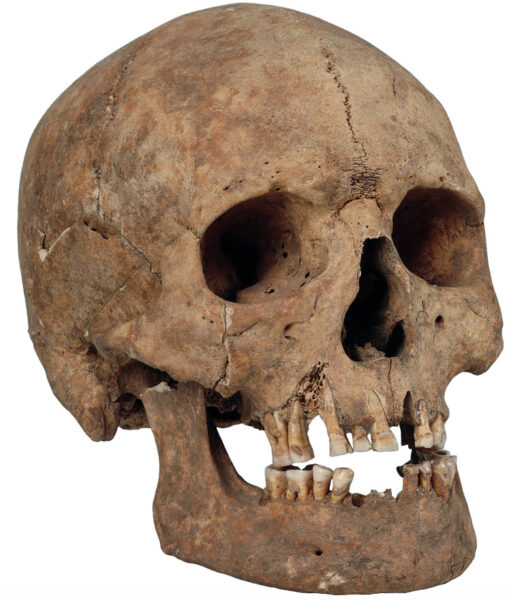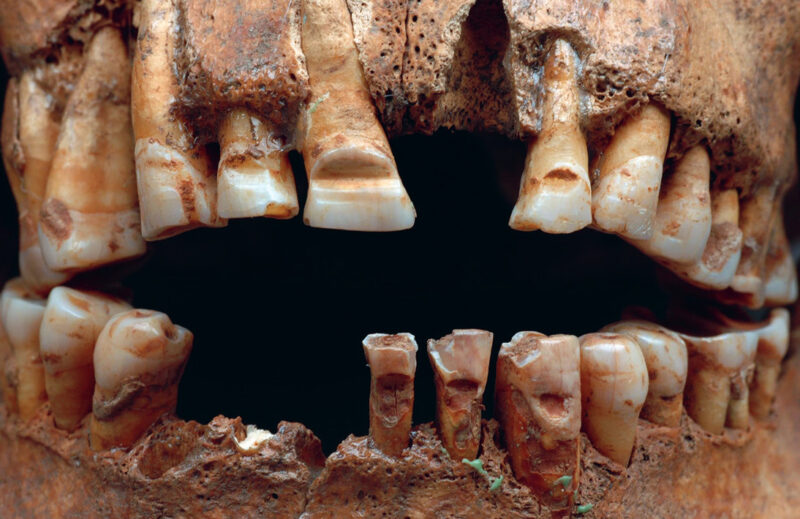Vikings filed horizontal grooves into their teeth to show they were merchants, according to a new study.
Making modifications to the human body is nothing new, and researchers have known for over a decade that Viking men did this. The practice shows up on remains across Sweden and Denmark. The big question has always been why?
In all, the tooth filing has shown up on 130 Viking era individuals. Researchers analyzed the particular remains from Gotland, Sweden. Here, the skeletons of 65 men showed the characteristic grooves. It’s the largest site showing the trend.
The location of the remains led researchers to believe that they were once merchants. All of the skeletons with grooved teeth turned up in places devoted to trading.

Skull of a male individual with filed teeth and healed fracture, Gotland. Photo: SHM/Gabriel Hildebrand 2011-12-09
Not locals
All had been buried in one small graveyard, slightly away from the settlement. The team believes that these individuals were not locals — that the graveyard was for people who visited the community periodically.
The researchers concluded: “The custom of tooth filing might have been linked to the trading activities of larger groups of professional merchants. According to this theory, they might have functioned as a rite of initiation and sign of identification for a closed group…a kind of precursor to the later guilds.”
This Gotland site yielded other body modifications. The skulls of three women showed intentional elongation and reshaping. The reasons for this are again, completely unknown. The women seem to have undergone skull binding at a young age.

Artificially modified skull from one Gotland woman. Photo: SHM/Johnny Karlsson 2008-11-05
Skull shaping
The skull shaping was much rarer than the tooth filing. Only three women were so modified, and all date back to around the same time. DNA analysis showed that one was local while another was from the Baltic region. The researchers suggest that the modification took place elsewhere, and then the women returned and settled in Gotland. It is clear that this was not a common practice in the area.
Very few people would have been able to bind the skulls. Skilled practitioners must have done it. The team suggests three reasons for why the modification is so rare in Gotland. First, the women may have been born elsewhere, where it was a more common practice. Second, that it passed down only through certain families, and those able to bind skulls died before imparting the unusual skill.
A third possibility is that the three women did not want to continue this identity modification with their children, so the practice quickly died out, at least in the Gotland region.






